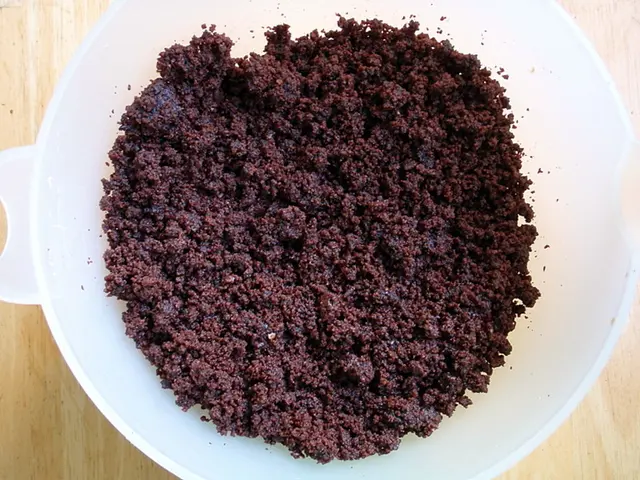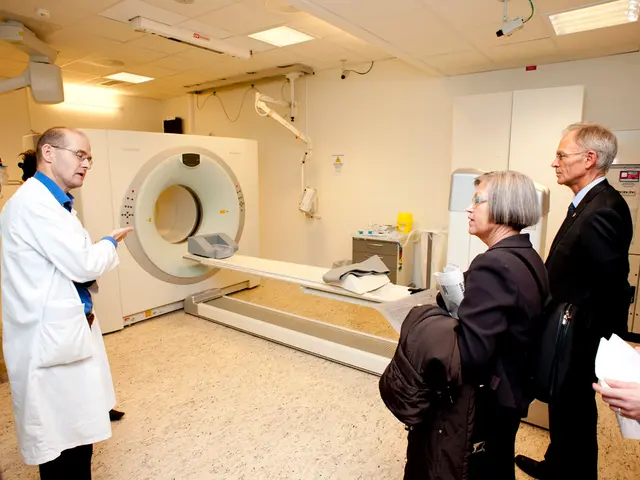Distinguishing Age Spots from Skin Cancer: A Guide for Recognition
Aging Spots vs Skin Cancer: What's the Difference?
As we age, our skin may develop unwanted spots that resemble various skin conditions, such as skin cancer. Let's delve into the key differences between aging spots and skin cancer to help you identify when it's time for a trip to the dermatologist.
Age Spots
Often referred to as liver spots or solar lentigines, age spots appear as dark, flat, and smooth patches, usually caused by an overproduction of melanin in response to sun exposure. Typically, these spots develop on areas of the skin that are commonly exposed, such as:
- Face
- Hands
- Shoulders
- Feet
- Arms
- Back
Age spots most commonly affect individuals with fair skin, but they can show up on any skin tone. Keep in mind that these benign spots are generally harmless and do not require treatment.
Skin Cancer
Skin cancer is a precancerous or cancerous growth that can also occur on sun-exposed areas of the skin. The three most common types of skin cancer are:
- Basal cell carcinoma
- Squamous cell carcinoma
- Melanoma
Although some skin cancer types can resemble age spots, there are distinct differences in symptoms, texture, and color:
- Basal Cell Carcinoma (BCC): May appear as shiny bumps or nodules.
- Squamous Cell Carcinoma (SCC): Can manifest as rough, scaly patches or firm, red nodules.
- Melanoma: Typically shows up as a new or changing mole with an irregular border, color, or shape.
It's essential to pay attention to any growths or changes in existing moles, as skin cancer can be highly treatable when detected early.
Symptom Comparison
| Condition | Symptoms ||-------------|----------------------------|| Age Spots | Generally symptom-free || Skin Cancer | Changes in moles, non-healing wounds |
Actinic Keratosis: Another Skin Condition to Watch Out For
Actinic keratosis (AK) is a precancerous growth caused by excessive sun exposure. AK lesions are typically scaly, thick, or crusty patches, often found on sun-exposed areas of the skin. These rough patches may appear before they're visible to the naked eye, so regular skin self-exams are essential.
Keep in mind that early treatment can help prevent the development of skin cancer. If you notice any potential signs of skin cancer or actinic keratosis, consult a healthcare professional immediately.
When to Contact a Doctor
Always speak with a healthcare professional if you notice any unusual changes to your skin, including:
- Changes in the size, shape, or location of a mole or spot
- Solitary spots that seem different from other spots on your skin
- Itching, oozing, scabbing, or bleeding spots that do not heal within 4 weeks
Diagnosis and Treatment
A healthcare professional will perform a physical examination to diagnose age spots and other skin conditions. In some cases, a skin biopsy may be necessary to confirm a diagnosis. Fortunately, with early detection and proper treatment, the prognosis for most skin conditions, such as aging spots and skin cancer, is favorable.
In summary, the key differences between aging spots and skin cancer boil down to symptoms, texture, and color. With regular self-exams and professional check-ups, you'll be better equipped to catch any potential skin issues early, ensuring the most effective treatments and better health outcomes.
- The key differences between aging spots and skin cancer are crucial for early identification, helping individuals determine when to visit a dermatologist should any concerns arise.
- Aging spots, such as liver spots or solar lentigines, generally appear as dark, flat, and smooth patches, commonly found on areas frequently exposed to the sun, whereas skin cancer can manifest as various growths or changes in moles on sun-exposed skin.
- Skin cancer, whether precancerous or cancerous, can be highly treatable when detected early, making regular self-exams and professional check-ups essential for maintaining skin health and wellness.
- Actinic keratosis, a precancerous growth caused by excessive sun exposure, may appear as scaly, thick, or crusty patches on the skin, typically found on sun-exposed areas. Early treatment for this skin condition can help prevent the development of skin cancer.
- For the proper diagnosis and treatment of both aging spots and various skin conditions, it's important to consult a healthcare professional if you notice any unusual changes in your skin, such as changes in the size, shape, or location of a mole or spot, or spots that do not heal within 4 weeks.








